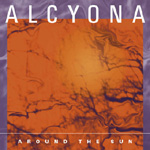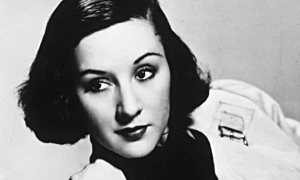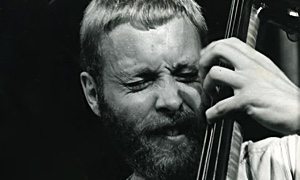Home » Jazz Articles » First Time I Saw » Saturdays With Mort (Fega)
Saturdays With Mort (Fega)
What Mort delivered was prime jazz, bright, scintillating, and freshly-crafted by the musicians who were making it happen, culled mostly from his own formidable record collection.
Coming out of the fifties at 19 years old, I'd had my fill of doo-wop and R&B. One windy Saturday afternoon in April, I heard this music on the radio coming from a little station in New Rochelle, NY, WNRC AM & FM. There was no sledge hammer back-beat and no loopy falsetto singing, no adolescent lyrics or twanging guitars. This music had a story line; it had a delicacy and a pulse that got inside your chest and your head and invited you places you'd always thought existed but never knew how to reach.
After the music ended, a voice came on the radio. It was not the hyped up, unctuously passionate rantings typical of the DJs of those times. This was a modulated, middle range male voice that talked conversationally, clearly, and that actually told you something. It told me that the sounds I'd just heard had been made by someone called Miles Davis, a trumpet player, and a couple of saxophone players named John Coltrane and Cannonball Adderley, a pianist named Red Garland, a bassist named Paul Chambers and a drummer they called "Philly Joe." And that the name of the song they'd just played was "''Round Midnight."
The announcer's voice belonged to Mort Fega. It was a voice that became my Saturday afternoon companion for quite some time after that. It was the voice that told me which jazz records to buy and explained without a lot of pretentious rhetoric who Dizzy was and what Bird and Monk and Duke had done.
One Saturday I screwed up my courage and wandered into the small second-story studio of WNRC with the hope of maybe seeing the man behind the voice. The studio was, even for that time, pretty low-tech. There was no receptionist. Just a little hallway leading to a closet-sized glass booth where Mort Fega sat with his headset on and a turntable under each hand.
As he spoke on-mic about the record he was about to play, he put his finger to his lips and then gestured me in. He offered me a seat across the turntables from him. Then he set the needle, clicked a switch, removed his headphones, and the voice that had talked to me through my radio speaker was suddenly talking directly to me. After about 15 minutes, I felt like we were old friends. I came back to the studio a few more times and Mort was always the gracious mentor, the avuncular teacher, the funny friend, the hip master of ceremonies.
One day after school, I got a call from him inviting me to go to Birdland with him that night. He was MC-ing there (nobody ever MC'd at Birdland but the diminutive Pee Wee Marquette) for "The Johnny Richards Orchestra." The band was an evolution of the Stan Kenton Orchestra. Richards had written a lot of the famous Kenton charts and now was trying to move on to the next level of creativity. There were tympani and a Latin percussionist, topflight musicians in every chair, and the arrangements were amazing.
Symphonic masterpieces that actually swung.
The band was debuting its first album at Birdland. Because I was with Mort Fega (the MC), I got to sit at a table with a tablecloth—down in front of the band instead of where I usually had to sit: over on the side of the bandstand in The Bullpen where penniless college kids and struggling musicians were usually relegated.
The orchestra was a huge, many-legged creature with an enormous, original voice. I'd never heard a big band in the small Birdland space before, and this was an experience that approached levitation.
Mort Fega became the champion of The Johnny Richards Orchestra, but it was not a good time for big bands of any type. After one or two albums, the band folded. But for the few brief, shining moments it existed, we can thank Mort Fega. It's probably one of his lesser-known achievements which, had it succeeded, it might have added an important page to jazz history.
"Jazz Unlimited," Mort's early Saturday show, reached into Manhattan and soon developed a real following of people who were longing for a more intelligent approach to a type of music that clearly deserved it. In 1959 Mort Fega was invited to be the MC at the very first Randall's Island Jazz Festival. Randall's Island was an athletic stadium located under the Triboro Bridge in New York. This was the festival that was supposed to supplant the world-famous Newport Jazz Festival. It was a very big deal and the fact that they'd asked Mort to participate was proof of the respect he'd earned in the jazz world.
And guess who Mort invited to sit down front for the big event? That's right. Me. The skinny little college kid who'd wandered into his studio that April afternoon looking for a way to connect with the magic that jazz made him believe in. The Randall's Island Stadium was filled to capacity, and it was a typical warm, damp, brown August evening. No stars visible, but the rain held off. I sat entranced as jazz star after jazz star appeared on the stage: Monk, The Jazz Messengers. Mort introduced Dakota Staton, who was experiencing a real surge in popularity at that time thanks to her "Late Late Show" album... the explosive Art Blakey and his Messengers... and the irrepressible Monk, who wore what Mort describes as "the now famous rickshaw hat" on stage.
Standing there in that sprawling venue, facing a sea of faces and surrounded by modern jazz's most imposing giants, Mort was as cool as a Miles Davis solo, relaxed and in his element. Riding home later in the car with him, he told me that he hadn't been the least bit nervous. Excited, yes, but not nervous. I thought: so that's what being cool is.
Shortly thereafter, Mort Fega's appeal as a jazz DJ and MC landed him a gig in New York City at WEVD AM & FM. His show ran opposite the well-entrenched Symphony Sid, he of the raspy, late-night voice, wandering syntax, and repetitive playlist. Sid created a mood, albeit a somewhat dated one. What Mort delivered was prime jazz, bright, scintillating, and freshly-crafted by the musicians who were making it happen, culled mostly from his own formidable record collection. Mort's commentary was always informative without ever being didactic. Hip without being a hipsterish. He knew just when to say "dig" instead of "appreciate."
Symphony Sid, obviously threatened by Mort's creative approach to jazz DJ-ing, was not above taking shots at his rival, alluding to him as "The Swan," an apparent reference to Mort's being white. Strange, since Sid was also white.
In a recent conversation I had with Mort about his old rival, he told me that he never swung back at Symphony Sid on the air, even in fun. "Off the air I always acknowledged how much he had done to further the acceptance of jazz. Mort said. " I even said that he should be inducted into some kind of Hall Of Fame for his pioneering efforts." Fega's stint at WEVD lasted from 1960 to 1966, when he was replaced by, of all people, Symphony Sid. Go figure.
In addition to the many things Mort Fega has done for jazz and its fans through the years, no story about him would be complete without a mention of his affection for the infamous jazz monologist, "Lord Buckley." Buckley employed a throaty, southern evangelist style delivery along with the hippest bebop jargon to re-tell hyped up, improvised stories about people like Jesus ("The Nazz") and Gahndhi ("The Hip Gahn"). And although the tales were simply the ones we all know, some people found Buckley irreverent while others just fell over laughing. Mort Fega dared to play some of Buckley's monologues on the air at a time when comedian Lenny Bruce was also storming the gates of propriety in nightclubs and concert venues.
From 1969 to 1975 Mort worked at station KXIV in Phoenix, then returned east where he introduced jazz programming to several local stations. He also produced live jazz every week at a local club in Hartford, bringing numerous big-name musicians in for Monday night gigs.
In 1986 Mort moved to Florida and connected with a local National Public Radio station, WXEL-FM, where he did five hours every Saturday night, again drawing from his own encyclopedic jazz library for musical material. He also taught a class at the Palm Beach Community College on "The History and Appreciation of Jazz," and wrote a monthly column, Focus on Jazz, for the Palm Beach Post.
Unfortunately for jazz and jazz listeners, Mort Fega is retired now, and the only music he plays is for his own enjoyment at his home in Delray Beach, Florida. There is no one to take his place. For me it has been nearly a lifetime since I've heard Mort's unmistakable voice on the radio, but it has stayed in my head as indelibly as the sound of Coltrane's tenor or Monk's unmistakable touch on the keyboard.
The theme song with which Mort always closed his first "Jazz Unlimited" show was Woody Herman's 2nd Herd's haunting rendition of "Early Autumn." That piece contained just about everything that's great about jazz—exquisite unison work, lyrical, singing solos, phrasing that left you limp with emotion, and an overall brightness tinged with sadness that defines the term "bittersweet."
Thanks, Mort, for all of that. And Happy New Year from a lifelong fan.
Tags
PREVIOUS / NEXT
Support All About Jazz
 All About Jazz has been a pillar of jazz since 1995, championing it as an art form and, more importantly, supporting the musicians who make it. Our enduring commitment has made "AAJ" one of the most culturally important websites of its kind, read by hundreds of thousands of fans, musicians and industry figures every month.
All About Jazz has been a pillar of jazz since 1995, championing it as an art form and, more importantly, supporting the musicians who make it. Our enduring commitment has made "AAJ" one of the most culturally important websites of its kind, read by hundreds of thousands of fans, musicians and industry figures every month.





















